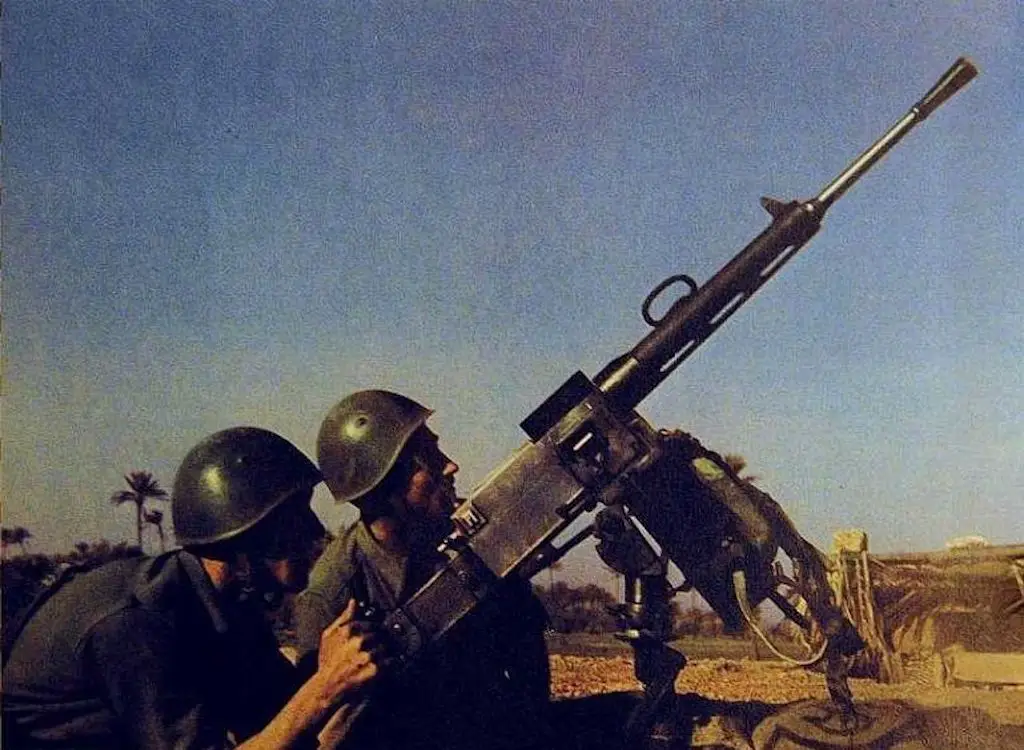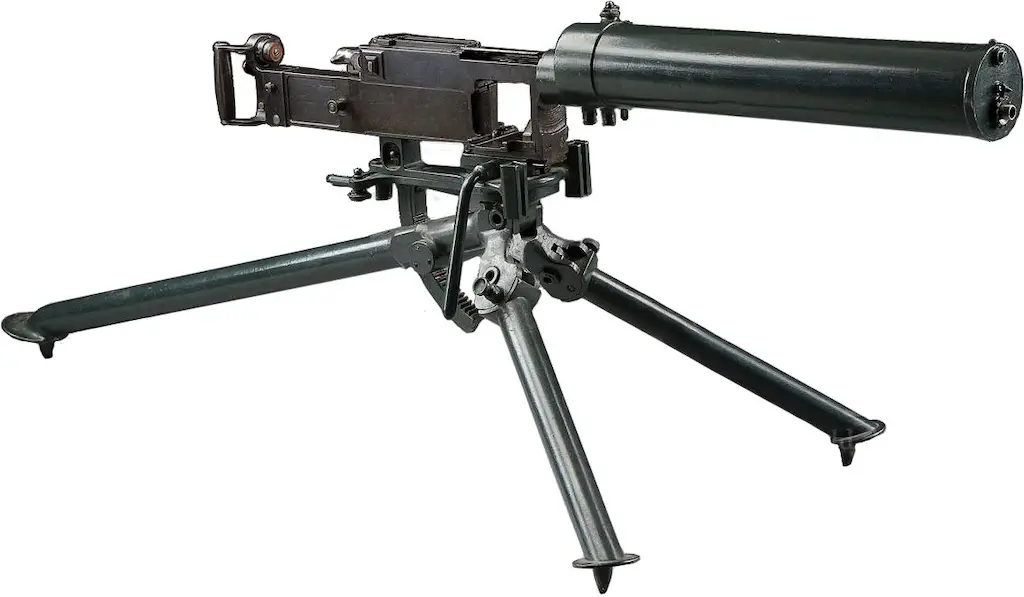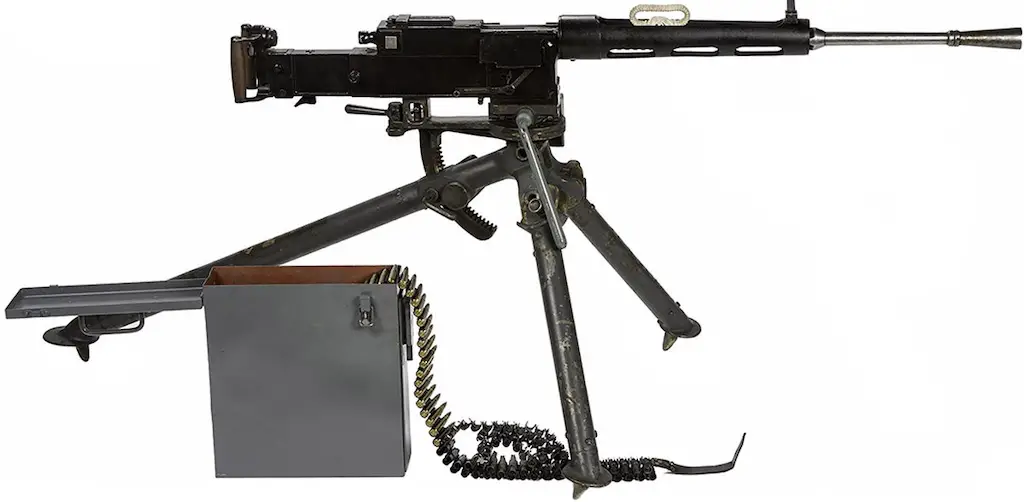In the late 1930s, the Italian army decided to refit its existing supply of Fiat–Revelli Modello 1914 WW1 machineguns. This modified machinegun is the Fiat-Revelli Modello 1935.

Origin – FIAT-Revelli mod.14
In the 1930s, the standard machinegun of the Italian army continued to be the FIAT-Revelli mod.14. In use since 1914, this weapon had several drawbacks. During the Great War, it proved to be inferior to its foreign counterparts.
The FIAT-Revelli mod.14 used the same cartridge as the Carcano mod.91 rifle (Carcano 6.5×52 mm), which undoubtedly provided logistical advantages but made a less powerful weapon. The feed-box did not use the classical feed-belt but instead used a curious “Cage” system. This cage system involved a small box (the cage) filled with 10 Carcano clips (50 rounds in total).

Fiat–Revelli Modello 1914.
A built-in oiling system lubricated the cartridges. However, this created problems for the weapon in certain environmental conditions such as high concentrations of dust, sand, etc. Likewise, the Breda 30 light machine gun later experienced these same problems.
Despite such flaws, the Regio Esercito utilized the FIAT-Revelli mod.14 until the 1930s. Its last significant use occurred during the Italo-Abyssinian war and the Spanish Civil War. By then, the army realized it needed new weapons with larger calibers. The Regio Esercito decided to utilize the new and impressive Breda mod. 37. However, they still desired to repurpose their enormous stock of FIAT-Revelli mod.14. They tasked Fiat to redesign the old weapon and solve its flaws.
Development of the Fiat–Revelli Modello 1935
In 1935, the conversion of old machine guns to the Fiat–Revelli Modello 1935 began. The new design eliminated the “cage” feeding system. Fiat replaced it with a classical fee-belt, thus maintaining the ineffective oiling system. A lighter air-cooling system replaced the cumbersome water-cooling system, making the gun easier to handle. The redesigned caliber now fired the more potent 8×59 mm RB Breda rounds.

Fiat–Revelli Modello 1935.
The new weapon resembled the air-cooled Fiat mod.14 “tipo aviazione,” designed in WW1 for mounting on Italian aircraft.
Service History
Although the conversion started in 1935, it took until 1940 to complete the replacement. However, frontline units were usually equipped with these newer guns like the Breda 37, Breda 30, and Fiat Revelli Modello 1935s. However, colonial troops, especially those deployed in Italian East Africa, still had some old FIAT-Revelli mod.14 in service when war broke out.
Although the new Fiat machinegun obtained a significant modification, it proved to be a failed design with apparent deficiencies. Commonly reported issues include:
- Inadvertent ammunition cookoff during live fire.
- Fragile barrel.
- Delicate feed system prone to malfunction.
- Cartridge ejection issues.
- Instability when firing at a negative elevation.
The Fiat–Revelli Modello 1935 obtained a bad reputation on the battlefield, similar to the Breda 30, but in sharp contrast with the excellent Breda 37. In fact, production ceased in wartime. At the end of hostilities, the Regio Esercito scrapped all remaining inventory.
The Breda 37, however, remained in service for a considerable time longer, given its clear superiority to the Fiat-mod.14/35.
Specifications
| Specification | M1914/35 |
|---|---|
| Cartridge | 8x59mm RB Breda |
| Feed System | Belt 50-Rounds |
| Weight | 39.9 lbs (18.1 kg) |
| Length | 4.16 ft (1270 mm) |
| Barrel Length | 2.14 ft (653 mm) |
| Effective Range | 3,280 ft (1000 m) |
| Action | Blowback |
| Muzzle Velocity | 2,460 ft/s (750 m/s) |
| Rate of Fire | 500 RPM |
Sources
Militaryfactory.com
Regioesercito.it
Modernfirearms.net
Forgottenweapons.com